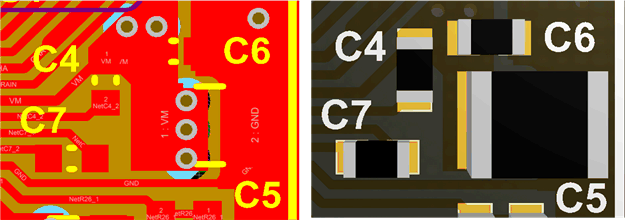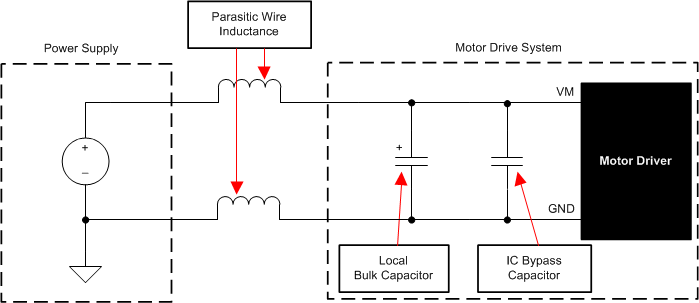SLVA959B November 2018 – October 2021 DRV10866 , DRV10963 , DRV10964 , DRV10970 , DRV10974 , DRV10975 , DRV10983 , DRV10983-Q1 , DRV10987 , DRV11873 , DRV3205-Q1 , DRV3220-Q1 , DRV3245E-Q1 , DRV3245Q-Q1 , DRV8301 , DRV8302 , DRV8303 , DRV8304 , DRV8305 , DRV8305-Q1 , DRV8306 , DRV8307 , DRV8308 , DRV8312 , DRV8313 , DRV8320 , DRV8320R , DRV8323 , DRV8323R , DRV8332 , DRV8343-Q1 , DRV8350 , DRV8350R , DRV8353 , DRV8353R , DRV8412 , DRV8701 , DRV8702-Q1 , DRV8702D-Q1 , DRV8703-Q1 , DRV8703D-Q1 , DRV8704 , DRV8711 , DRV8800 , DRV8801 , DRV8801-Q1 , DRV8801A-Q1 , DRV8802 , DRV8802-Q1 , DRV8803 , DRV8804 , DRV8805 , DRV8806 , DRV8811 , DRV8812 , DRV8813 , DRV8814 , DRV8816 , DRV8818 , DRV8821 , DRV8823 , DRV8823-Q1 , DRV8824 , DRV8824-Q1 , DRV8825 , DRV8828 , DRV8829 , DRV8830 , DRV8832 , DRV8832-Q1 , DRV8833 , DRV8833C , DRV8834 , DRV8835 , DRV8836 , DRV8837 , DRV8837C , DRV8838 , DRV8839 , DRV8840 , DRV8841 , DRV8842 , DRV8843 , DRV8844 , DRV8846 , DRV8847 , DRV8848 , DRV8850 , DRV8860 , DRV8870 , DRV8871 , DRV8871-Q1 , DRV8872 , DRV8872-Q1 , DRV8873-Q1 , DRV8880 , DRV8881 , DRV8884 , DRV8885 , DRV8886 , DRV8886AT , DRV8889-Q1
5.1 Bulk Capacitor Placement
In a motor drive system design, a bulk capacitor minimizes the effects of low-frequency current transient and stores charge to supply large currents required by the motor driver when it switches. When selecting a bulk capacitor, consider the highest current required by the motor system, supply voltage ripple, and type of motor.
Use bulk electrolytic capacitance to help source the low-frequency, high-value currents from the current that is driven through the motor winding. These capacitors usually are greater than 10 µF depending on the application requirements.
Place all bulk capacitors near the power supply module or power entry point of the board. TI recommends that each bulk capacitor have multiple vias connecting the pad to the respective power plane. TI also recommends that all bulk capacitors have low equivalent series resistance (ESR).
 Figure 5-1 Bulk Capacitor Multi-Via Placement
Figure 5-1 Bulk Capacitor Multi-Via Placement Figure 5-2 Bulk and Bypass Capacitor Placement
Figure 5-2 Bulk and Bypass Capacitor Placement